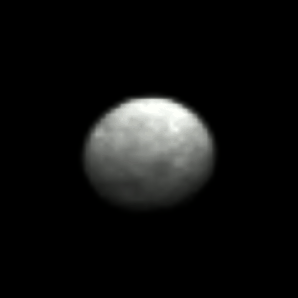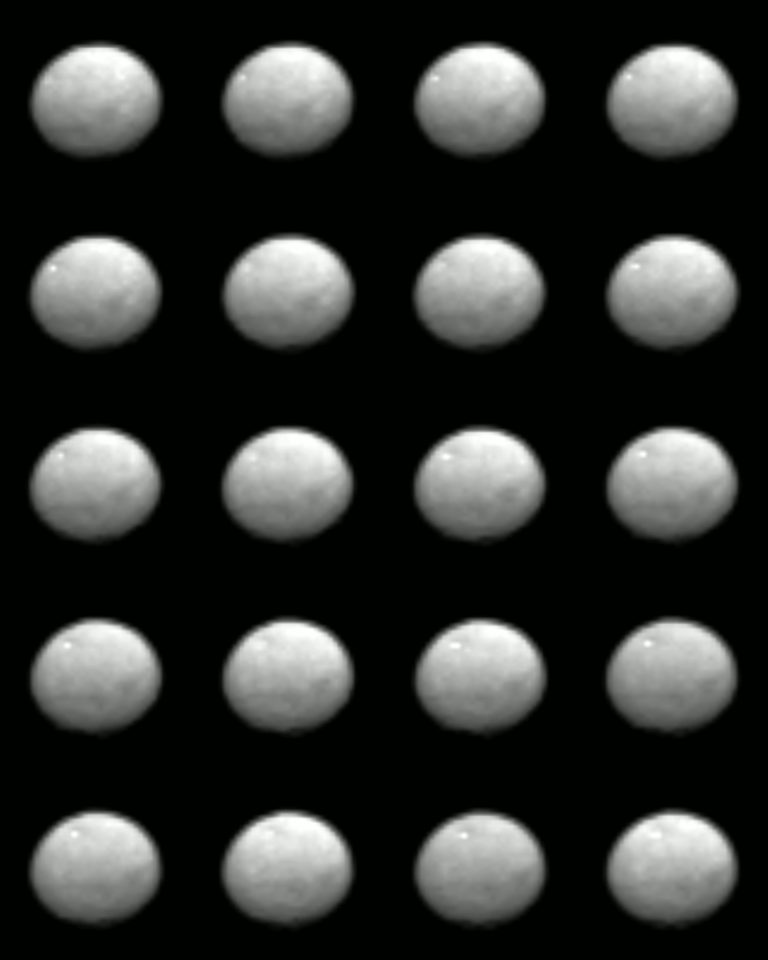Emily Lakdawalla • Jan 20, 2015
New Dawn images of Ceres: comparable to Hubble
The Year of the Dwarf Planet is off to a great start! Yesterday the Dawn mission released its latest photos of Ceres, taken from 383,000 kilometers away -- roughly the same as the distance from Earth to the Moon. The original pictures were 27 pixels across, and I'm surprised by the amount of detail that is visible. There are circular features that might (or might not!) turn out to be craters, and a noticeable bright spot. Other markings are not obviously circular. It's hazardous to try to read these images too closely -- but they are awfully cool, showing Ceres beginning to come into focus! Our other dwarf planet mission, New Horizons, will get photos of Pluto that are about 27 pixels across at the very end of June. I'm so glad we have Dawn approaching Ceres to satisfy our mini-world curiosity right now, because it will be hard to wait for comparable Pluto images for so long.

Here I've separated the frames out of the animation so you can examine them individually:

One of the Hubble images was taken from a very similar perspective, and it also contains the bright dot and some of the darker areas visible in the Dawn images. I'll leave it as an exercise for you to find other similarities! The Hubble images from January 2004 have slightly better resolution than these Dawn photos, but they were taken from a lower phase angle. That enhances color variety, but it's tough to see any topographic detail because there are few shadows. Some of the features we are seeing in the Dawn images of Ceres must be topographic ones, especially close to the terminator (near the bottom of the images), where shadows are most dramatic.

If you look at the Dawn animation again, you may notice a striking flickering. I thought that was a telltale sign that the camera was cycling through different color filters as it took the photos, and I made a color version of the photo, but I've been told by a member of the Dawn team that the flickering was not due to filter choices, but just due to lack of calibration, so I've taken out the color picture. Sorry about the confusion!
The Time is Now.
As a Planetary Defender, you’re part of our mission to decrease the risk of Earth being hit by an asteroid or comet.
Donate Today

 Explore Worlds
Explore Worlds Find Life
Find Life Defend Earth
Defend Earth

